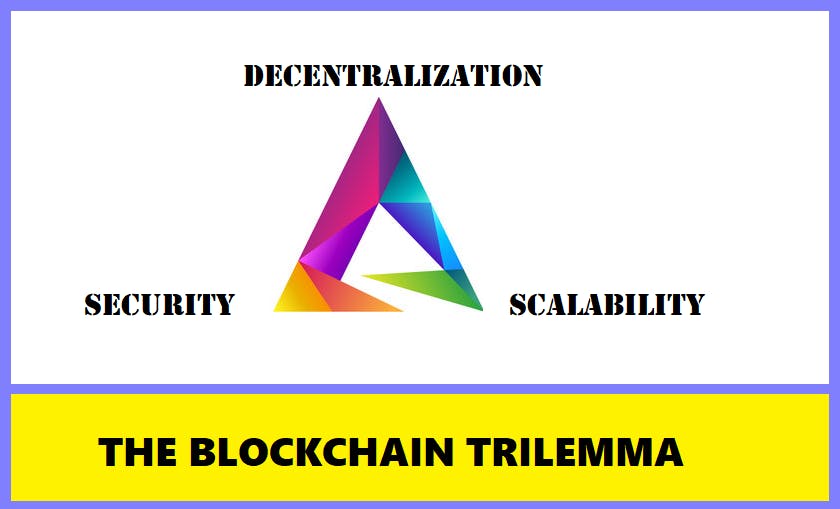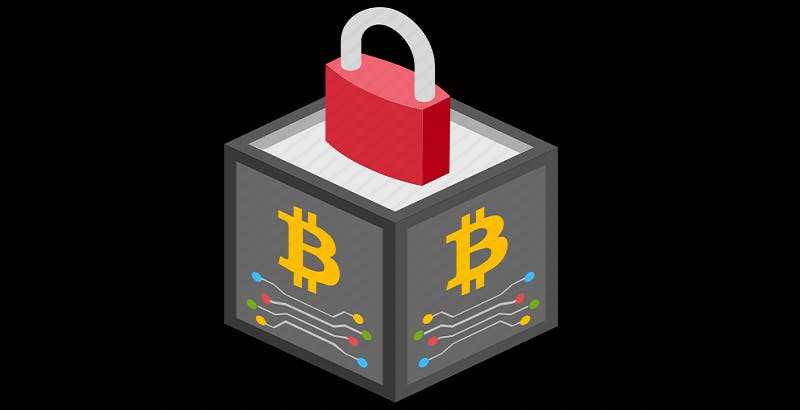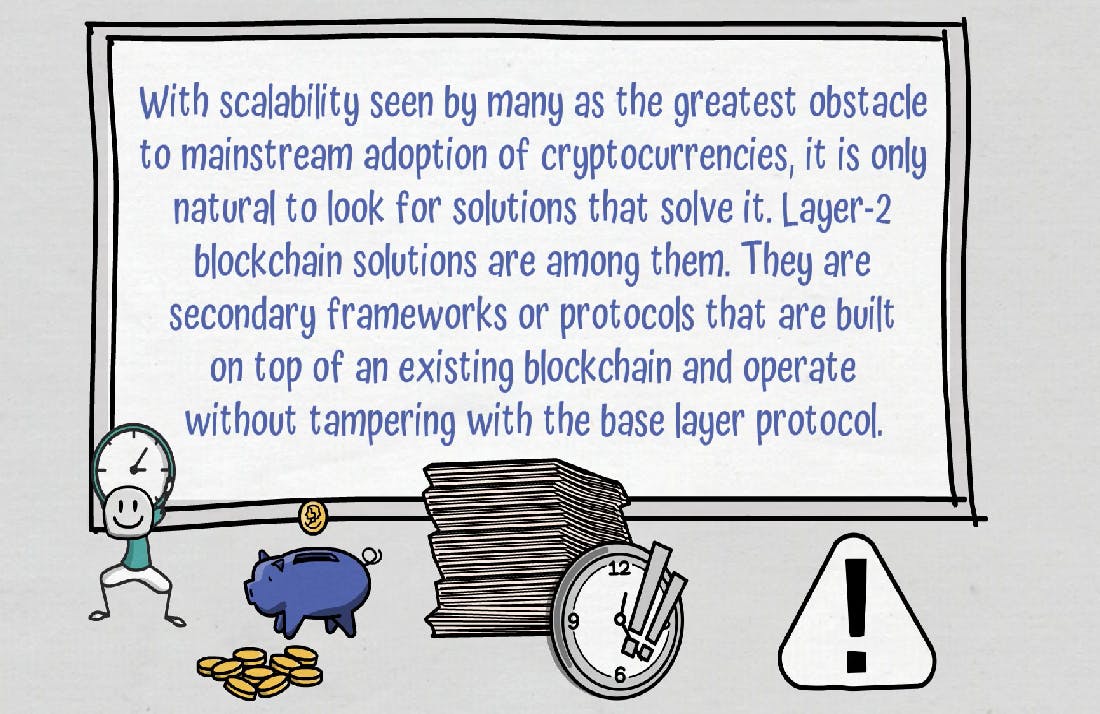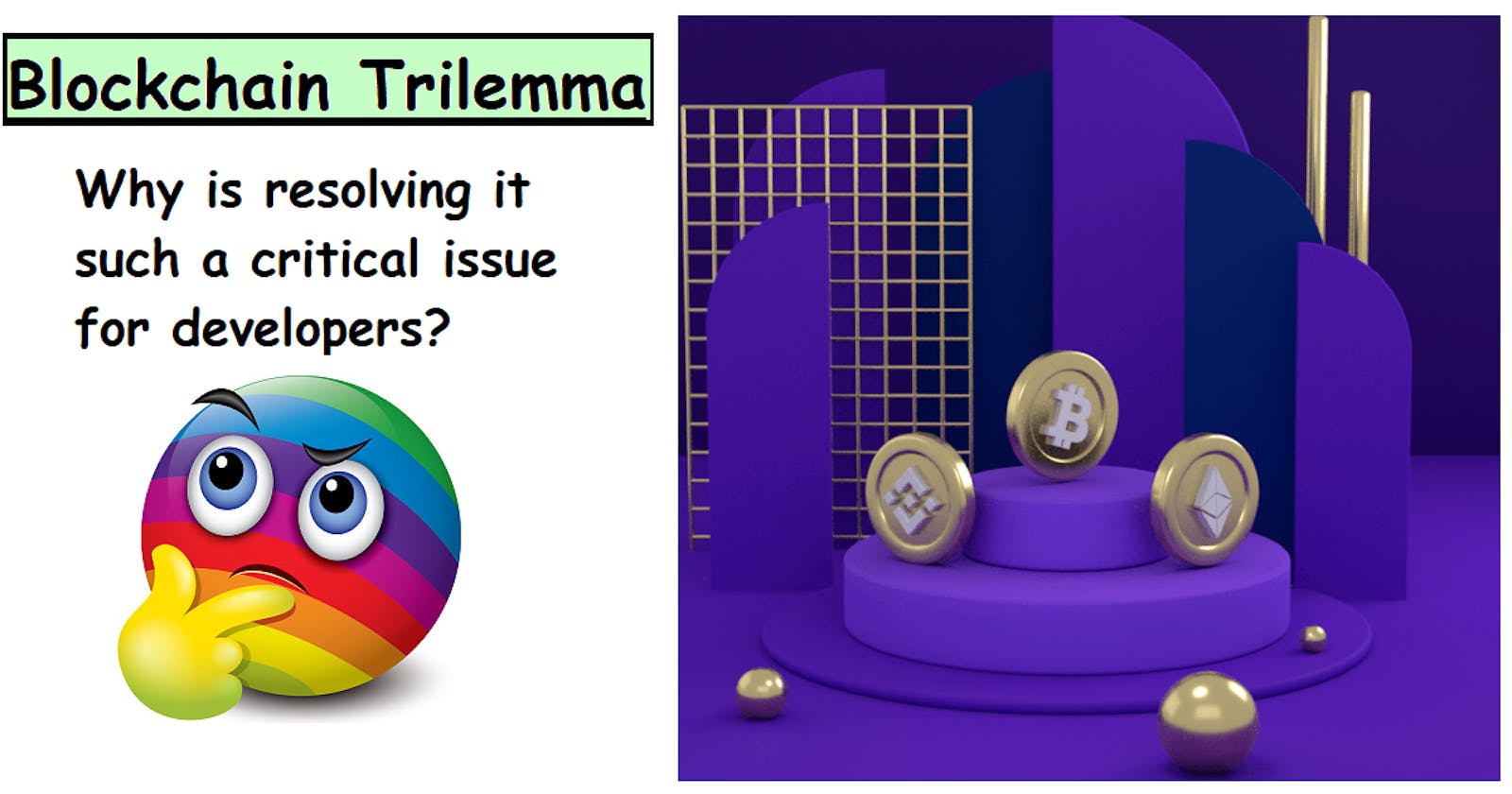How Can Layer-2 Solutions Assist in the Blockchain Trilemma's Resolution?
Blockchain, in conjunction with artificial intelligence and cloud computing, allows for the safe and efficient storage and processing of data. However, like every other technology, blockchain has limitations.
 While blockchain is becoming widely recognizable as a backbone of next-generation technology, its fundamental notion is confronted with a unique problem termed as the Blockchain Trilemma. The blockchain trilemma is the dilemma of being unable to strike a balance between 3 aspects in blockchain: Decentralization, Security, and Scalability.
While blockchain is becoming widely recognizable as a backbone of next-generation technology, its fundamental notion is confronted with a unique problem termed as the Blockchain Trilemma. The blockchain trilemma is the dilemma of being unable to strike a balance between 3 aspects in blockchain: Decentralization, Security, and Scalability.

Now let’s understand these 3 terms one by one. What exactly these terms imply?
- 🌈Decentralization: The ability of blockchain to distribute data and processing power among computers in n/w is referred to as decentralization. It is in charge of guaranteeing that data is always secure and that no entity can hack a blockchain network in order to get the data stored there. Rather of being administered by a single company, blockchain give network control to all members equally.
The more decentralized the network, the more difficult it is for a single person to manage or shut it down. More the participants, higher the decentralization. And, as the number of participants increases, so does the total system fault-tolerance and security.
 Speaking of the devil😈, let me dive deep into the second dimension, security.
Speaking of the devil😈, let me dive deep into the second dimension, security.
- 🌈Security: Security is an important aspect in every field. Isn't it? It includes network’s defense mechanisms against threats and malicious users who may wish to exploit other machines on the blockchain in some way. Security is a must-have for blockchain in today's competitive business.

- 🌈Scalability: A blockchain, like any other computer network, must be scalable. It must be able to handle the flood of users that occurs when it becomes popular. Blockchain should be able to sustain a massive number of transactions and users without experiencing bottlenecks due to increased costs and transaction delays.

The similar issue arises frequently in computer science and has been hotly debated since the 1980s. The CAP theorem asserts that it is impossible to have more than two of the three features stated below in a decentralized data storage system:
🌈Consistency: Every read receives the most recent writing, unless an error occurs.
🌈Availability: Each request is met with a (non-error) response, but there is no assurance that it includes the most current write.
🌈Partition tolerance: The system continues to run despite the network dropping (or delaying) an arbitrary amount of communications between nodes.


- For Scalability✔, compromise security❌: With the technology available today, developers must sacrifice security in order to grow the network. Enterprise blockchain solutions go so far as to use permissioned networks, which lack decentralization but provide exceptionally high TPS (Transactions per second) . Projects would have to move from Proof of Work to Proof of Stake in order to enable scalability without compromising security.
- For Decentralization✔, compromise scalability❌: The majority of protocols accomplish decentralization using a Proof of Work consensus method. This is problematic since mining consumes a lot of energy, which causes environmental issues. Furthermore, such networks are incapable of attaining a high TPS count, causing the blockchain to fail to scale.
- For security✔, compromise Scalability❌: Blockchain must use PoW consensus techniques, which need a large number of miners to ensure the network's security. However, when more miners join the network and strengthen its security, elements such as scalability suffer owing to PoW's inability to sustain large transaction volume. As I explained why obtaining all three features at same time is an impossible task that will never be accomplished. However, there are still some forward-thinking developers who feel that blockchain networks can include all three and more.

It won't be for long, though Layer-Two Solutions Can Benefit.
While blockchain developers are working hard to improve things, one suggestion appears to be more effective than others — layer-two solutions. To comprehend layer-two solutions, you must first understand layer-0 and layer-1.
- 🌈Layer 0: It is made up of components that are responsible for the blockchain's operation. This layer contains components such as hardware, the internet, and other connections.
- 🌈Layer 1: It is the basic layer. This layer manages consensus, blockchain time, programming, and dispute resolution - all of which ensure that the blockchain's essential functioning is maintained.
- 🌈Layer 2: These are secondary networks that are constructed on the core network. Their job is to improve scalability by removing some of the interactions that must be handled at the base layer. As a consequence, the blockchain smart contract will solely manage withdrawals and deposits, guaranteeing that all transactions are legal. Blockchain networks, such as Bitcoin and Ethereum, have intrinsic scalability constraints. Ethereum handles about 15-20 transactions per second, compared to Paypal and Visa, which handle hundreds and thousands of transactions per second, respectively.
Why is this blockchain architecture so slow to process?
When a transaction occurs, the decentralized network must reach global consensus. To validate transactions on the network, all nodes on the network maintain a complete copy of the transactions. It is intended to tackle the problem of double spending without the need of a middleman. Blockchain networks can function as the decentralized web ecosystem's layer 1 (or foundation layer). The ultimate objective is to 're-decentralize' the world wide web's infrastructure, protocols, applications, and multiple levels. The solutions are tiers. Layer 1 is the security layer that roots data transactions in an immutable, cryptographically secure manner without the need for a central authority.
 Layer 2 enables you to drastically reduce data processing on the blockchain by doing computations off-chain. When there are disagreements, the base chain will continue to be the final arbiter. The key advantage of the second layer is that it reduces the quantity of data stored on the base layer. Taking transactions off the base layer while remaining attached to it will free up processing resources to perform other things while retaining the benefits of security and decentralization.
Layer 2 enables you to drastically reduce data processing on the blockchain by doing computations off-chain. When there are disagreements, the base chain will continue to be the final arbiter. The key advantage of the second layer is that it reduces the quantity of data stored on the base layer. Taking transactions off the base layer while remaining attached to it will free up processing resources to perform other things while retaining the benefits of security and decentralization.

Final Wrap Up
The trilemma is neither a limitation of Blockchain, nor is the CAP theorem a limitation of distributed systems. The trilemma is a blockchain property that we must acknowledge and deal with in order to make decisions in blockchain development initiatives. We will have to identify two components of the trilemma that are critical to solving our problem.
Kudos to those who took the time to read this lengthy yet useful post😂. Thank you for reading this article 💜. Please follow Techie tweed powered by Hashnode to read more articles like this.

